Editor’s note: Dr. David Orme-Johnson is one of the principal researchers on the Transcendental Meditation® (TM®) technique worldwide, with over 100 scientific publications in books, collections, and peer-reviewed journals. He has presented TM research in over 56 countries, for scientific conferences, high-ranking government officials, and the United Nations. His website, TruthAboutTM.org, is the go-to resource on TM research worldwide.
In this Q&A, he explores the research showing three kinds of brain-based effects on society through the practice of the TM technique and its advanced programs:
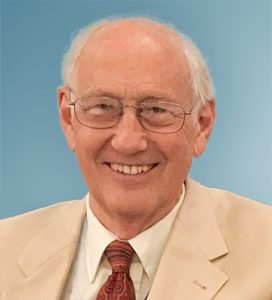
Dr. David Orme-Johnson
1. How peace and prosperity radiate to the near environment when we practice the TM technique on our own.
2. How there is a phase transition to a more profound and extensive influence of greater peace and less crime when 1 percent of a population is practicing the TM technique.
3. How there is an even more profound phase transition towards greater peace and less conflict when the square root of 1 percent practice the TM technique and the more advanced TM-Sidhi® program as a group.
Research shows that everyone is directly connected through something called “collective consciousness.”
Q&A with Dr. Orme-Johnson
Can Inner Peace Impact the Outer World?
Q: As meditators we’ve all experienced the deep rest, calm, inner wakefulness, and alertness that occurs during our TM practice. Can this growing inner peace and harmony have an impact on the outer world as well?
A: Yes. Society is a web of interactions between people. Whatever we feel, think, speak, and even convey through body language is transmitted to everyone around us: to our family, friends, co‑workers, strangers, and everyone we contact. And, of course, we’re connected electronically with the entire globe through the Internet, email, texting, social media, and other means too.
But there is a deeper principle here, something which is potentially much more impactful: Research shows that everyone is directly connected through something called “collective consciousness.”
Q: What does it mean to be “connected through collective consciousness”?
A: TM Founder Maharishi Mahesh Yogi proposed that society has layers of collective consciousness—family consciousness, community consciousness, city consciousness, state consciousness, national consciousness. We are all connected through these layers of collective consciousness. We all directly influence each other, positively or negatively.
If people in society are stressed, for example, that stress influences everyone else in society and is the root cause of social problems.1,2 Research has shown that higher rates of individual stress—bankruptcies, unemployment, divorces, high-school drop-out rates, and other factors—correlate with higher levels of crime, sickness, and other measures of well-being in the society as a whole.3
Higher rates of individual stress—bankruptcies, unemployment, divorces, high-school drop-out rates, etc.—correlate with higher levels of crime, sickness, and other measures of well-being in the society as a whole.
Q: I do feel less tense and anxious since I’ve been practicing TM, but what is the scientific evidence that the technique reduces stress?
A: Research shows that the TM technique produces a state of deep relaxation in the physiology,4,5 creates more orderly brain functioning,6 and decreases the stress hormone cortisol by 30 percent,7,8 to give just a few examples.
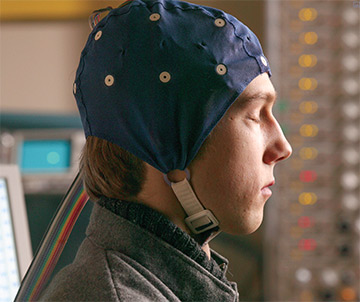
Practicing the TM technique in the EEG (electroencephalogram) or brain waves lab. Sensors in the cap pick up electronic activity of the brain and send it to a computer for analysis, which shows brain function becoming highly orderly (coherent) during TM, leading to greater brain integration in activity.6
As a result, with regular TM practice, both quickly and over time, smoking, anxiety, depression, anger, alcohol consumption, drug abuse, and personal conflicts tend to decrease.9,10,11
Maharishi suggested from the start that the increased calm in individuals practicing TM is transmitted to everyone else in society through collective consciousness.
As early as 1962, he is on record in the press as saying that “while 10 percent would be ideal, even if only 1 percent of the world’s population meditated, it would be sufficient to do away with the hatred that causes war.”12
“Even if only 1 percent of the world’s population meditated, it would be sufficient to do away with the hatred that causes war.” —Maharishi
The Effect of a Few on the Many
Q: Where did the figure of 1 percent come from?
A: The sources are both ancient and modern. Maharishi explained that according to the Vedic tradition of India, direct experience of the field of infinite silence through the TM technique creates waves of orderliness that radiate out into the environment.13
Maharishi also had training in physics, and knew that the coherent action of 1 percent of a system can organize the whole system. For example, 1 percent of the cells in the heart, the pacemaker cells, organize the rhythmic beating of the heart. Similarly, approximately 1 percent of the neurons in the brain working together lead the brain into a state of global coherence. This synchronous activity in turn organizes neuronal processes to work together for fine-motor behavior, memory, intelligence, creativity, and even moral reasoning.14-20
1 percent of the cells in the heart, the pacemaker cells, organize the rhythmic beating of the heart. Similarly, 1 percent of the neurons in the brain working together lead the brain into a state of global coherence.
Q. Before we get more deeply into this 1 percent effect, are there any examples of a small number of people practicing TM and influencing a larger group?

High school students practicing the TM technique together as part of the David Lynch Foundation’s Quiet Time program
A: Yes. In the last few years, the David Lynch FoundationSM has introduced the TM technique into school curriculums as part of the Quiet Time program in high-risk, high-stress inner-city schools around the country.
What they found is that even though not everyone in the school learned the TM technique, the whole school culture improved, as seen in reduced violence, anger, anxiety, depression, and fatigue, and increased focus, resilience, self-esteem, and self-control.
This resulted in an average of 50 percent fewer suspensions, and increased attendance, grade-point averages, and graduation rates for everyone. Several schools reported going from low-performing to high-performing status overall.21,22
Q: What about other groups in society? Is there such an effect in businesses or families?
A: As in schools, many businesses have found that even when a small percentage of employees practice the TM technique, the climate of the business improves.23 A forthcoming study that I recently reviewed for publication found that when 5 percent of the employees of a company learned the TM technique, the quality of production in the whole company increased, mistakes decreased, and the quality and quantity of production increased dramatically.
The same principle also appears to work in the high-stress environments of prisons. A recent study found that when prison inmates learned the TM technique, not only did their own PTSD symptoms decrease, but so did the PTSD symptoms of non-meditating inmates, but only by about half as much.24,25
When 5 percent of the employees of a company learned the TM technique, the quality of production in the whole company increased, mistakes decreased, and the quality and quantity of production increased dramatically.
Breakthrough Research on 1 Percent in Cities
Q: This makes sense. We’ve all experienced how a family member going through a stressful time can raise the stress levels of the whole family. What is the evidence that this 1 percent principle works on the larger scale of, say, a city?
A: Breakthrough research that 1 percent of a population practicing the Transcendental Meditation technique reduces crime rate was discovered in 1974. Researchers found that the crime rates decreased an average of 8.2 percent in 11 U.S. cities, compared to an 8.3-percent increase in crime in control cities with similar demographics.26

Study comparing 24 cities with 1 percent of the population practicing TM and 24 cities with less than 1 percent of TM practitioners over an 11-year period (1967–1977). Left-hand chart shows there was an immediate decrease in the crime rate in the 1 percent cities the year 1 percent was reached compared to a slight increase in the control cites. Right-hand chart shows that there was a trend of decreasing crime rate over the 7 years after the 1 percent cities reached 1 percent compared to a trend of increasing crime in the control cities.27
The study was expanded to include 24 cities with 1 percent practicing TM and 24 control cities. It also found that the crime rate did not decrease until the year the 1 percent figure of TM practitioners was achieved.27
In addition, this study found that the TM cities showed a trend of reducing crime over the six-year observation period following reaching the 1 percent threshold, as compared to matched controls. (See left- and right-hand charts in figure.)
Dr. Michael Dillbeck and colleagues then further expanded the research to 160 U.S. cities, representing half of the urban population of the nation. They found that rising numbers of TM meditators in a population predicted a decreased crime rate in the same and following years. The peer-reviewed Journal of Mind and Behavior published this research.28
Rising numbers of TM meditators in a population predicted a decreased crime rate in the same and following years that the 1 percent threshold was reached.
Q: But the correlation of reduced crime and 1 percent of a population practicing TM does not necessarily mean that TM practitioners caused the decrease in crime. Could both TM and crime be influenced by a third factor, like changes in unemployment?
A: That is an excellent question. First of all, the studies controlled for the effects of other variables known to influence crime. “Control” in this case means they calculated the effects of different factors on crime and then statistically removed those effects. They then calculated if the introduction of the TM technique had an effect that was not explained by other factors.
For example, the study of 160 cities controlled for the following social factors: median years of education, percent unemployment, per capita income, percent of families in poverty, stability of residence, percent over age 65, population size, population density, and ratio of police per population. All of these are known to be correlated with crime rates. When the influences of these factors on crime were removed, the percentage of TM practitioners in a population was still shown to have a significant effect on reducing crime.28
Increases in the percentage of people practicing the TM technique predicted decreases in crime rate, but decreases in crime rate did not predict increases in the number of meditators in the population.
The study also addressed the question of causation by looking at the pattern of correlations. It found that over the years, increases in the percentage of people practicing the TM technique predicted decreases in crime rate, but decreases in crime rate did not predict increases in the number of meditators in the population. This is a strong argument that the percentage of a city practicing the TM technique is causing the change in crime, and not the other way around, because the cause always has to come before the effect.
The Discovery Known as the “Maharishi Effect”
Q: This seems to be an important scientific discovery. Does it have a name?
A: Yes. The researchers named it the Maharishi Effect, after Maharishi Mahesh Yogi, who predicted the effect of the TM practice on society and made the technologies of consciousness available for implementation.26,29,30
Q: What has the response been from other scientists and researchers to this radical discovery?
A: In the history of science, groundbreaking research has often been met with a range of responses, and the research on the Maharishi Effect is no exception.31 But whether they agree or disagree with the conclusions, reviewers have said they can’t argue with the rigorous science behind the studies.
For the purposes of a scholarly exchange on this research, we asked a number of scientists and editors to comment. The editor of the Journal of Mind and Behavior, Raymond Russ, Ph.D., who published the paper on the Transcendental Meditation program in 160 cities, sent us this comment: “The hypothesis initially raised some eyebrows among our reviewers. But the statistical work is sound. The numbers are there. When you can statistically control for as many variables as these studies do, it makes results much more convincing. This evidence indicates we now have a new technology to generate peace in the world.”
“When you can statistically control for as many variables as these studies do, it makes results much more convincing. This evidence indicates we now have a new technology to generate peace in the world.” —Dr. Raymond Russ, Journal of Mind and Behavior
Q: So are you saying, and is the research suggesting, that something that we’re silently doing on our own, with eyes closed, can affect all these other factors around us? How does this work?
A: This is where it gets really interesting, with insights from modern physics.
Quantum physicist John Hagelin explains it this way: “What we’ve discovered at the foundation of the universe is a universal field where all the forces and particles of nature are united as one. They are all ripples on a single ocean of existence.” Dr. Hagelin has further postulated that the unified field and transcendental consciousness, that state of inner silence that we experience when we practice the TM technique, are one and the same.32,33
The theory is that at the deepest level of nature is a unified field where everything is interconnected. This connectivity harmonizes all the processes in nature to work smoothly together. During our TM practice, when our minds settle down and transcend, we touch upon this underlying, universal field of harmony and enliven it. And because it’s a non-localized field existing everywhere, it is also enlivened within our surroundings.
During our TM practice, when our minds settle down and transcend, we touch upon this underlying, universal field of harmony and enliven it. And because it’s a non-localized field existing everywhere, it is also enlivened within our surroundings.
On the basis of these theories, research scientists have found the field effect of transcendental consciousness to be the most successful explanation for the 1 percent effect. This is the explanation, in other words, that is most consistent with the research findings.
Q: OK, I’m getting a better sense of the general theory, but can you give me a more concrete example of how this works? I can see how individual stress is reduced, but how can environmental stress be reduced to such an extent?

Functional Magnetic Resonance Imaging (fMRI): Restoration of balanced brain functioning. Chronic and/or traumatic stress shuts down the prefrontal cortex (“higher brain”) and causes chronic excitation of the amygdala (“fear center”). TM practice calms areas in the brain stem associated with deep relaxation (blue), and stimulates activity in the prefrontal cortex (orange).34
A: We can easily see this enlivenment of the harmonizing effect of TM on an individual’s neurophysiology. Neuroimaging studies have shown that the TM technique increases the activity of the executive areas in the frontal lobes, which regulate the activities of the entire brain.34 All areas of the brain become more coordinated, as indicated by increases in EEG or brainwave coherence.20,21,35
The improved frontal lobe functioning regulates the emotional center of the brain, the amygdala. This helps protect a person from acting out of raw fear and anger, as indicated by the effect of TM practice on reducing fighting in schools22 and prisons.36,37
Each time a person practices the TM technique, these effects, however small, are transmitted to others through the unified field. When enough people, 1 percent or more, practice TM, then the effect becomes large enough that it begins to change the trends for an entire population, as indicated by reduced crime rate.
New Breakthroughs—The TM-Sidhi Program and the Square Root of 1 Percent in a Group
Q: The 1 percent theory is compelling. However, in a large country like the United States, it seems it would be very difficult to attain even 1 percent of the population practicing TM. The U.S. population is about 325 million, so 1 percent would still be over 3 million people needed to practice TM.
A: Two breakthroughs come to our rescue here. One is that in 1976 Maharishi introduced the TM-Sidhi program, an advanced meditation program that has been shown to produce even greater brain wave coherence than the TM technique alone.38,39 (To learn more about the TM-Sidhi program, visit EnjoyTM.org.)
The second discovery was that when the TM and TM-Sidhi programs are practiced in a group, the effect is amplified as compared to when individuals practice individually throughout a population. In fact, practicing in large groups actually appears to square the effect.
For example, when you have 10 people pulling together in the same direction at one end of a rope, they can overcome 100 people at the other end who are pulling in different directions. This is because 10 squared = 100. When experts in the TM and TM-Sidhi programs come together to practice at the same time and place, the positive effect they create in society is much greater than when they practice individually.
This was discovered in the summer of 1978 when many TM teachers went to Rhode Island for a special research project and practiced the TM and TM-Sidhi programs as a group. At that time it was found that the square root of 1 percent had an effect equivalent to 1 percent practicing TM separately.40
When experts in the TM and TM-Sidhi programs come together to practice at the same time and place, the positive effect they create in society is much greater than when they practice individually.
To determine how many participants practicing the TM and TM-Sidhi programs in a group are needed to influence a population in a positive direction, we calculate the square root of 1 percent of the population.
In the case of the U.S. population, for example, the square root of 1 percent (3.25 million) is only 1,803 people. This is how many experts in the TM and TM-Sidhi programs are needed to practice in a group in order to reduce negative trends such as crime rate in the nation.
The square root of 1 percent of a population is also a much more manageable number of people to organize, both to effect change and to research scientifically.
Research on the Square Root of 1 Percent in Washington, D.C.
Q: Has the amplified effect of group practice of the TM and TM-Sidhi programs been tested? What were the results?
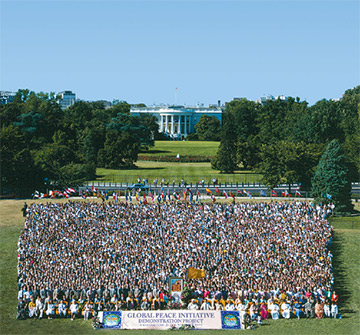
In the summer of 1993, over 4,000 TM and TM-Sidhi practitioners gathered in Washington, D.C., to test the Brain-Based Approach to Peace.
A: There are 66 papers on the Maharishi Effect: 46 research papers and 20 papers on theory and review. Of these, 23 studies have been published in peer-reviewed journals and the others have been published in research anthologies.29,41-45
For example, in the summer of 1993, a large group assembled in Washington, D.C. in order to test this hypothesis and demonstrate its effects.
More than 4,000 practitioners of the TM and TM-Sidhi programs gathered in Washington, D.C., to scientifically test and measure the effect of the Brain-Based Approach to Peace on reducing violent crime in the U.S. capital city.
From June 7 to July 30, 1993, the group increased from 800 to 4,000. Prior to the study, violent crime (measured by FBI Uniform Crime Statistics) had been steadily increasing for five months. After the start of the study, violent crime began decreasing and continued to drop until the end of the experiment, after which it began to rise again.46
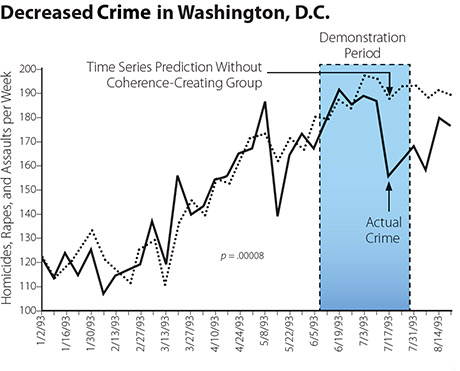
Decreased crime in Washington, D.C., correlated with increasing numbers of people practicing the TM and TM-Sidhi programs.46
Crime decreased more than 23 percent during the demonstration project, according to research published in the peer-reviewed scientific journal Social Indicators Research.46
The likelihood that this result could be attributed to a chance variation in crime levels was less than two parts per billion (p < .000000002). The drop in crime could not be attributed to other possible causes, such as temperature, precipitation, weekends, or police and community anti-crime activities.
Research on the Maharishi Effect in International Conflict
Q: What about during international conflict? Has this theory ever been tested during times of war?
A: Yes. Another famous study using the square root of 1 percent formula was the International Peace Project in the Middle East, in which all the variables used in the study were public statistics, and the results were predicted in advance to an independent project review board.
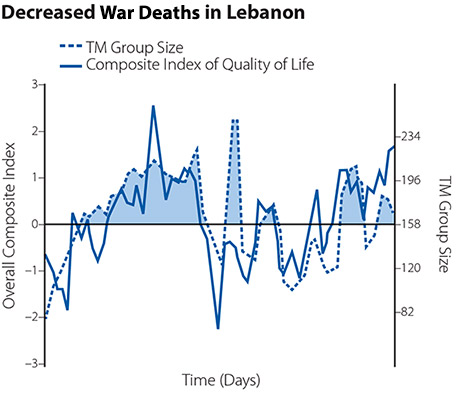
Changes in the quality of life in Israel and war deaths in Lebanon correlate with changes in the numbers of people practicing the Transcendental Meditation and TM-Sidhi programs as a group.47
The study, which was published in the top journal in the field, Yale University’s Journal of Conflict Resolution, measured the effects of a group of practitioners of the TM and TM-Sidhi programs in Jerusalem in August and September in 1983. The daily fluctuations in the size of the group resulted in corresponding changes in a composite index of quality of life.
When the group got bigger, crime, traffic accidents, fires in Israel, war fatalities, and war intensity in Lebanon correspondingly decreased. The national mood improved, and the stock market, a measure of economic confidence, increased.47 War intensity in Lebanon decreased by 45 percent and war fatalities decreased 75.7 percent.
Q: But how can you know whether the changes in all these areas are coming from the effects of people meditating and practicing the TM and TM-Sidhi programs as a group or something else?
A: The study mathematically showed that the ups and downs in the different variables could not explain the changes in societal trends. The group produced something new and different that could not be predicted by the behavior-as-usual of the variables.
In addition, the researchers created control variables that removed the influence of other events that might have explained the effects. In this way, it was demonstrated that the effect the group created was independent from the effects of weekends, religious holidays, daily temperature, and military and political events.43,44
The study mathematically showed that the ups and downs in the different variables could not explain the changes in societal trends. The group produced something new and different that could not be predicted by the behavior-as-usual of the variables.
For example, perhaps the quality of life gets better on weekends and holidays anyway, creating a spurious correlation between the TM and TM-Sidhi group size and the quality of life. To test this hypothesis, researchers split the daily data into two sets: one containing only weekends and holidays, and the other just weekdays.
They found the TM and TM-Sidhi group effect worked in both cases. During weekends and holidays, if the group was bigger the quality of life was significantly improved, and the same was true on weekdays. The quality of life is better on weekends and holidays—fewer crimes, accidents, and fires—but the effect of the TM and TM-Sidhi group is independent of this influence.
Q: Maybe these results were just a lucky accident. Have they been repeated?
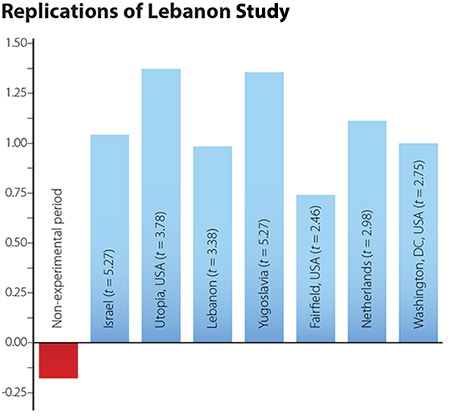
On seven different occasions, the Peace-War Index improved during assemblies of experts practicing the TM and TM-Sidhi programs.44
A: A fair question. Perhaps the most powerful demonstration of the causality of the square root of 1 percent is replication. This study was replicated seven times.44
Under seven different conditions of time of year, and cultural, political, and military situations, whenever a group near or far away reached the requisite size to impact Lebanon, the war decreased. This was seen in a 71 percent decrease in war fatalities and a 68 percent decrease in war injuries.
At the same time, there was a 66 percent increase in cooperation among former antagonists.
Under seven different conditions of time of year, and cultural, political, and military situations, whenever a group near or far away reached the requisite size to impact Lebanon, the war decreased.
Q: In the 1962 quote from Maharishi, he suggested that 1 percent of the world practicing TM could create world peace. Has there been any research on a worldwide effect?
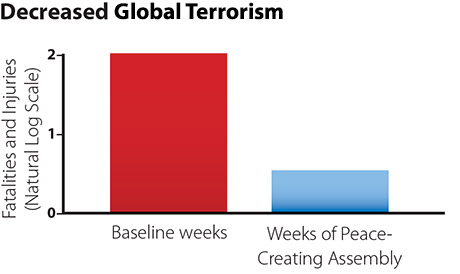
A single, two-year time series 1983-1985, spanning three assemblies ranging from 8 to 10 days, of approximately 7,000 TM and TM Sidhi program experts in Fairfield, Iowa; The Hague, Holland; and Washington, D.C. During the assemblies, fatalities and injuries due to terrorism decreased 72 percent, according to data obtained from the Rand Corporation.45
A: Yes. In the 1980s the square root of 1 percent of the world population was about 7,000.
On three occasions, groups of 7,000 practicing the TM and the TM-Sidhi programs assembled. During these assemblies, international conflicts decreased by approximately 30 percent, and international terrorism decreased by 72 percent.
Specifically, between 1983 and 1985, for three periods ranging from 8 to 10 days, groups of approximately 7,000 TM and TM-Sidhi program experts were assembled, in Fairfield, Iowa; in The Hague, Holland; and in Washington, D.C.
Data on the number of fatalities due to terrorism worldwide were obtained from the Rand Corporation, forming a single, two-year-long time series spanning the three assemblies. During the period of the assemblies, compared to other days during the two years, fatalities and injuries due to terrorism decreased 72 percent. The study controlled for time of year and societal trends and cycles.45
During the period of the assemblies, compared to other days during the two years, fatalities and injuries due to terrorism decreased 72 percent.
Q: These are all older studies. Is there any more recent research on the square root of 1 percent effect?
A: Yes. An excellent series of four papers was recently published by Dr. Michael Dillbeck and Dr. Ken Cavanaugh. They analyzed a range of indicators of quality of life in the United States during the experimental period from 2007 to 2011, when the number of TM and TM-Sidhi participants who practiced at the same time and place in the meditation domes in Fairfield, Iowa, reached or exceeded the square root of 1 percent of the U.S. population (1,725 at that time). They found that during this experimental period there was improved U.S. quality of life, as indicated by decreased rates of homicide, motor vehicle fatalities, other fatal accidents, violent crime, drug-related deaths, and infant mortality.48-51
Global Union of Scientists for Peace and Other Efforts
Q: Shouldn’t every country be using this approach to peace?
A: The Global Union of Scientists for Peace (GUSP), a coalition of Nobel Laureates, leading scientists, presidents, prime ministers, and other high-ranking officials, has been testing and implementing this approach in dozens of countries with promising results. Dr. John Hagelin is the international president of this organization.
In 2017 GUSP hosted a Global Peace Summit in Kiev, Ukraine. More than 600 scientists, Nobel Laureates, educators, and political and military leaders from 21 countries gathered to explore this evidence-based approach to preventing war, achieving national security, and promoting regional and global peace. Read more about the Global Peace Initiative.

Dr. John Hagelin addresses the Global Peace Summit at the Fairmont Grand Hotel in Kiev, Ukraine. Large-screen monitors and simultaneous translation ensured participants from various countries could take full advantage of the proceedings.
In 2017 GUSP hosted a Global Peace Summit in Kiev, Ukraine. More than 600 scientists, Nobel Laureates, educators, and political and military leaders from 21 countries gathered to explore this evidence-based approach to preventing war.
Q: What can I do to help create greater peace in the world with my TM practice?
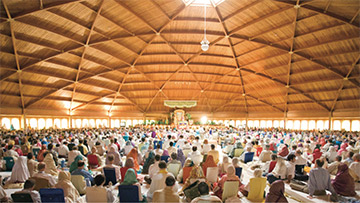
Hundreds of practitioners of the TM and TM-Sidhi programs gather twice daily in two large meditation domes on the campus of Maharishi University of Management in Fairfield, Iowa.
A: Maharishi, the founder of this 1 percent effect, explained that every single meditation creates a wave of peace and coherence, not only in your own mind and body, but also through the unified field to the whole world.
In addition, almost every month there are either Nationwide or Global TM Group Meditations, offering an opportunity for people around the country and the world to meditate at the same or similar times, at their local TM Centers, at home, or wherever they are.
On January 13, 2019, for example, 112,179 people practiced the TM technique around the world in synchrony. The most recent Global TM Group Meditation was on March 24, 2019. Learn more and see the schedule for upcoming TM Nationwide and Global Group Meditations.
Maharishi explained that every single meditation creates a wave of peace and coherence, not only in your own mind and body, but also through the unified field to the whole world.
Dr. David Orme-Johnson, one of the principal researchers on the Transcendental Meditation technique worldwide, served as Director of Research of the International Center for Scientific Research, and Vice Chancellor of Maharishi European Research University. At Maharishi University of Management, Dr. Orme-Johnson was Head of the Psychology Department, Director of the Doctoral Program in Psychology, Co-Director of the Ph.D. program in the Physiology of Human Consciousness, and Dean of Research. As the author of over 100 scientific publications in books, collections, and peer-reviewed journals, he has presented TM research in more than 56 countries, to scientific conferences, high-ranking government officials, and the United Nations. For more about his work and research visit Dr. Orme-Johnson’s website, TruthAboutTM.org.
References
2. Maharishi Mahesh Yogi. Creating an Ideal Society. West Germany: Maharishi European Research University Press, 1977.
3. A. S. Linsky, Strauss M. A. Social stress in the United Sates: Links to regional patterns of crime and illness. Dover, MA: Auburn House, 1986.
4. M. C. Dillbeck, Orme-Johnson D. W. “Physiological differences between Transcendental Meditation and rest.” American Psychologist 42 (1987): 879–881.
5. R. K. Wallace. “Physiological effects of Transcendental Meditation.” Science 167 (1970): 1751–1754.
6. F. T. Travis, Haaga D., Hagelin J. S., et al. “Effects of Transcendental Meditation practice on brain functioning and stress reactivity in college students.” International Journal of Psychophysiology 71, no. 2 (2009): 170-176.
7. R. Jevning, Wilson A. F., Davidson J. M. “Adrenocortical activity during meditation.” Hormones and Behavior 10, no. 1 (1978): 54-60.
8. K. G. Walton, Fields J. Z., Levitsky D., et al. “Lowering cortisol and CVD risk in postmenopausal women: a pilot study using the Transcendental Meditation (TM) Program.” Annals of the New York Academy of Sciences 1032 (2004): 211-215.
9. C. N. Alexander, P. Robinson, & M. V. Rainforth. “Treating alcohol, nicotine and drug abuse through Transcendental Meditation: A review and statistical meta-analysis.” Alcohol Treatment Quarterly, 11 (1994): 13-87. doi:10.1300/J020v11n01_02
10. D. W. Orme-Johnson, & V. A. Barnes. “Effects of the Transcendental Meditation technique on trait anxiety: A meta-analysis of randomized controlled trials.” Journal of Alternative and Complementary Medicine, 20(5), (2013): 330-341. doi:10.1089/acm.2013.0204
11. M. A. Hawkins, D. W. Orme-Johnson, & C. F. Durchholz. “Fulfilling the rehabilitative ideal through the Transcendental Meditation and TM-Sidhi Programs: Primary, secondary, and tertiary prevention. Journal of Social Behavior and Personality, 17(1), (2005): 443-488.
12. Maharishi Mahesh Yogi, quoted in Innsbruck, Austria, newspaper, Tiroler Tageszeitung, 23 July 1962. Quoted in V. Katz. Conversations with Maharishi: Maharishi Mahesh Yogi Speaks about the Full Development of Human Consciousness. Vol. 1. Fairfield, Iowa, USA: Maharishi University of Management Press, 2011.
13. T. Egenes. Verse 2.35. Maharishi Patanjali Yoga Sutra. 1st ed. Fairfield, IA: 1st World Publishing (2010).
14. M. C. Dillbeck, Vesely S. A. “Participation in the Transcendental Meditation program and frontal EEG coherence during concept learning.” International Journal of Neuroscience 14 (1986): 147-151.
15. S. I. Nidich, Ryncarz R. A., Abrams A. I., et al. “Kohlbergian moral perspective responses, EEG coherence, and the Transcendental Meditation and TM-Sidhi program ” Journal of Moral Education 12, no. 3 (1983): 166-173.
16. D. W. Orme-Johnson, Haynes C. T. “EEG phase coherence, pure consciousness, creativity and TM-Sidhi experiences.” International Journal of Neuroscience 13 (1981): 211-217.
17. S. Palva, Palva J. M. “New vistas for alpha-frequency band oscillations.” Trends in Neurosciences 30, no. 4 (2007): 150-158.
18. P. Sauseng, Klimesch W., Schabus M., Doppelmayr M. “Fronto-parietal coherence in theta and upper alpha reflect central executive functions of working memory.” International Journal of Psychophysiology 57 (2005): 97–103.
19. R. W. Thatcher. “Coherence, Phase Differences, Phase Shift, and Phase Lock in EEG/ERP Analyses.” Developmental Neuropsychology 37,no. 6 (2012): 476-496.
20. F. T. Travis, Arenander A. “Cross-sectional and longitudinal study of effects of Transcendental Meditation practice on interhemispheric frontal asymmetry and frontal coherence.” International Journal of Neuroscience 116, no. 12 (2006): 1519-1538.
21. V. A. Barnes, Bauza L. B., Treiber F. A. “Impact of stress reduction on negative school behavior in adolescents.” Health Qual Life Outcomes 1, no. 1 (2003): 10.
22. Colbert, R. D., and S. Nidich. “Effect of the Transcendental Meditation Program on Graduation, College Acceptance and Dropout Rates for Students Attending an Urban Public High School.” Education 133, no. 4 (2013): 495-501.
23. R. J. Broome, D. W. Orme-Johnson, & J. Schmidt-Wilks. “Worksite stress reduction through the Transcendental Meditation program.” Journal of Social Behavior and Personality 17(1), (2005): 235–273.
24. S. Nidich, T. O’Connor, T. Rutledge, J. Duncan, B. Compton, A. Seng, & R. Nidich. “Reduced trauma symptoms and perceived stress in male prison Inmates through the Transcendental Meditation program: A randomized controlled trial. The Permanente Journal, 20(4), (2016): 16-007.
25. S. Nidich, A. Seng, B. Compton, T. O’Connor, J. W. Salerno, & R. Nidich. “Transcendental Meditation and Reduced Trauma Symptoms in Female Inmates: A Randomized Controlled Study.” The Permanente Journal, 21 (2017): doi:10.7812/TPP/16-008.
26. C. L. Borland, G. S. III. “Improved quality of Life through the Transcendental Meditation program: Decreased crime rate.” In Scientific research on the Transcendental Meditation Program : Collected papers, edited by Orme-Johnson D. W., Farrow J. T., 651-658. Livingston Manor, NY: Maharishi European Research University Press, 1977.
27. M. C. Dillbeck, Landrith III G., Orme-Johnson D. W. “The Transcendental Meditation Program and Crime Rate Changes in a Sample of Forty-Eight Cities.” Journal of Crime and Justice 4 (1981): 25-45.
28. M. C. Dillbeck, Banus C. B., Polanzi C., Landrith III G. S. “Test of a field model of consciousness and social change: The Transcendental Meditation and TM-Sidhi program and decreased urban crime.” The Journal of Mind and Behavior 9 (1988): 457-486.
29. K. L. Cavanaugh, King K. D., C. Ertuna C. “A multiple-input transfer function model of Okun’s misery index: An empirical test of the Maharishi Effect.” Proceedings of the American Statistical Association, Business and Economics Statistics Section (1989): 565-570.
30. G. D. Hatchard, Deans A. J., Cavanaugh K. L., Orme-Johnson D. W. “The Maharishi Effect: A model for social improvement: Time series analysis of a phase transition to reduced crime in Merseyside metropolitan area.” Psychology, Crime, & Law 2, no. 3 (1996): 165-175.
31. C. L. Brown. “Overcoming barriers to use of promising research among elite Middle East policy groups.” Journal of Social Behavior and Personality 17(1), (2003): 489-546.
32. J. S. Hagelin. “Is Consciousness the Unified Field? A Field Theorist’s Perspective.” Modern Science and Vedic Science 1, no. 1 (1987): 29-88.
33. J. S. Hagelin. “Restructuring Physics From its Foundation in Light of Maharishi’s Vedic Science.” Modern Science and Vedic Science 3, no. 1 (1989): 3-72.
34. M. C. Mahone, Travis F., Gevirtz R., Hubbard D. “fMRI during Transcendental Meditation practice.” Brain and Cognition Epub 2018 Mar 2 (2018): doi:10.1016/j.bandc.2018.02.011.
35. F. T. Travis. “Autonomic and EEG patterns distinguish transcending from other experiences during Transcendental Meditation practice.” International Journal of Psychophysiology 42, no. 1 (2001): 1-9.
36. A. Abrams, Siegel L. “The Transcendental Meditation program and rehabilitation at Folsom State Prison: A cross-validation study.” Criminal Justice and Behaviour 5 (1978): 3-20.
37. C. N. Alexander, Orme-Johnson D. W. “Walpole study of the TMprogram in maximum security prisoners II: Longitudinal study of development and psychopathology.” Journal of Offender Rehabilitation 36, no. 1-4 (2003): 127-160.
38. D. W. Orme-Johnson, Gelderloos P. “Topographic EEG brain mapping during Yogic Flying.” International Journal of Neuroscience 38, no. 3-4 (1988): 427-434.
39. F. T. Travis, Orme-Johnson D. W. “EEG coherence and power during Yogic Flying.” International Journal of Neuroscience 54, no. 1-2 (1990): 1-12.
40. M. C. Dillbeck, A. Foss, & W. Zimmerman. Maharishi’s global ideal society campaign: Improved quality of life in RhodeIsland through the Transcendental Meditation and TM-Sidhi program.” In R. Chalmers, G. Clements, H. Schenkluhn, & M. Weinless (Eds.), Scientific research on Maharishi’s Transcendental Meditation and TM-Sidhi programme: Collected papers, volume 4. Vlodrop, The Netherlands: Maharishi Vedic University Press, 1989.
41. D. W. Orme-Johnson, Fergusson L. “Global impact of the Maharishi Effect from 1974 to 2017: Theory and Research.” Journal of Maharishi Vedic Research Institute 8 (2018): 13-76.
42. D. W. Orme-Johnson, Alexander C. N., Davies J. L. “The effects of the Maharishi Technology of the Unified Field: Reply to a methodological critique.” Journal of Conflict Resolution 34 (1990): 756–768.
43. D. W. Orme-Johnson, Oates R. M. “A field-theoretic view of consciousness: Reply to critics.” Journal of Scientific Exploration 32, no. 2 (2009): 139-166.
44. J. L. Davies, Alexander C. N. “Alleviating political violence through reducing collective tension: Impact assessment analysis of the Lebanon war.” Journal of Social Behavior and Personality 17,no. 1 (2005): 285-338.
45. D. W. Orme-Johnson, M. C. Dillbeck, C. N. Alexander, H. M. Chandler, & R. W. Cranson. “Effects of Large Assemblies of Participants in the Transcendental Meditation and TM-Sidhi Program on Political Crime: Decreased International Conflict and Terrorism.” Journal of Offender Rehabilitation, 36 (2003): 283-302.
46. J. S. Hagelin, M. Rainforth, D. W. Orme-Johnson, K. L. Cavanaugh, C. N. Alexander, S. F. Shatkin, J. L. Davies, A. O. Davies, & E. Ross, E. “Effects of the group practice of the Transcendental Meditation program on preventing violent crime in Washington, D.C.: Results of the national demonstration project, June-July 1993.” Social Indicators Research, 47 (1999): 153-201.
47. D. W. Orme-Johnson, Alexander C. N., Davies J. L., et al. “International Peace Project: The Effects of the Maharishi Technology of the Unified Field.” Journal of Conflict Resolution32, no. 4 (1988): 776-812.
48. M. C. Dillbeck, K. L. Cavanaugh. “Societal violence and collective consciousness: Reduction of U.S. homicide and urban violent crime rates.” SAGE Open, April-June (2016):1-16.
49. K. L. Cavanaugh, M. C. Dillbeck. “The contribution of proposed field effects of consciousness to the prevention of U.S. accidental fatalities: Theory and empirical tests.” Journal of Consciousness Studies 24(1-2), (2017):53–86.
50. M. C. Dillbeck, K. L. Cavanaugh. “Group Practice of the Transcendental Meditation® and TM-Sidhi® Program and Reductions in Infant Mortality and Drug-Related Death: A Quasi-Experimental Analysis.” SAGE Open, January-March (2017):1-15.
51. K. L. Cavanaugh, M. C. Dillbeck. “Field Effects of Consciousness and Reduction in U.S. Urban Murder Rates: Evaluation of a Prospective Quasi-Experiment.” Journal of Health and Environmental Research 3(3-1), (2017):32-43.

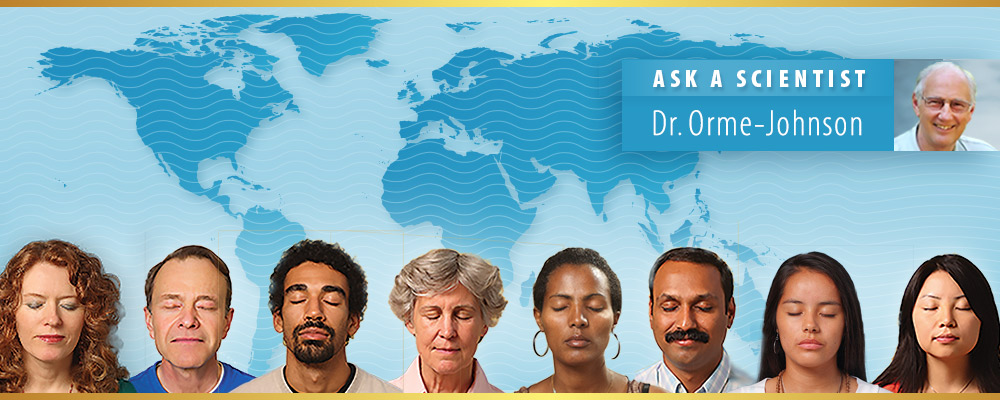
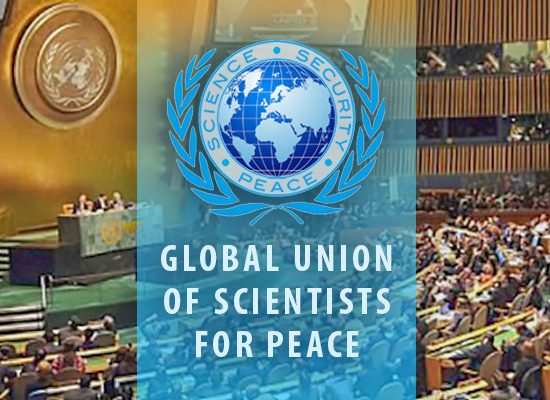
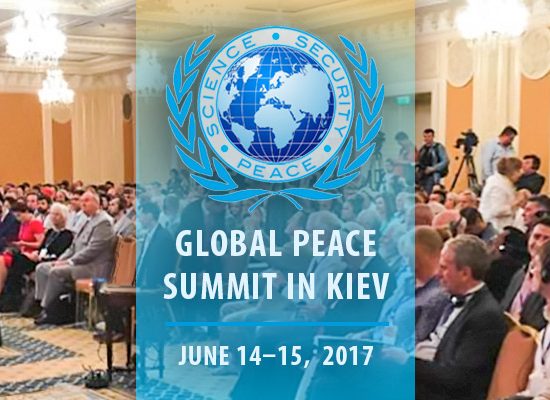
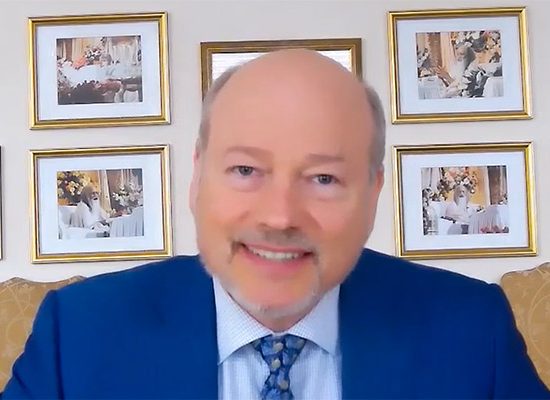
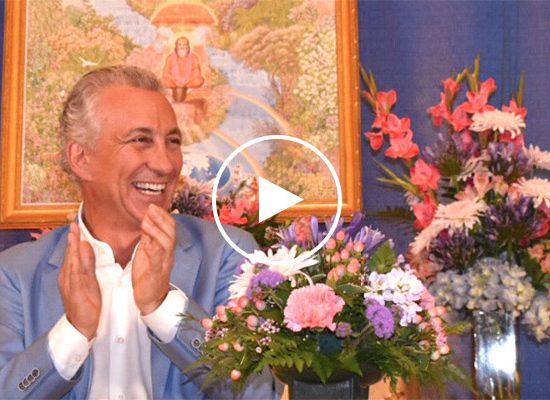
How can I join daily group meditation in my area?
TM Connect offers online group meditations in all time zones. For the schedules and connection details, visit this page: https://enjoytmnews.org/strengthen-your-tm-practice-with-tm-connect/
Your local TM Center may also offer online and/or in-person group meditations in your area. Find your nearest TM Center here https://enjoy.tm.org/find-your-tm-center and contact them about their meetings. Enjoy!
Hello, thank you for the profound knowledge expressed in this article.
You mentioned the Maharishi Effect is doing TM in the same time and place to produce the desired effect. What about the effect of doing TM or TM Sidhis in same time only in different locations: Are there any studies on this? Does it produce the 1% effect also?
JGD. Thanks
Thank you for your appreciation and excellent questions, Kamal. I believe some of the studies have addressed these queries, and will pass them on to Dr. Orme-Johnson to address. Thanks!